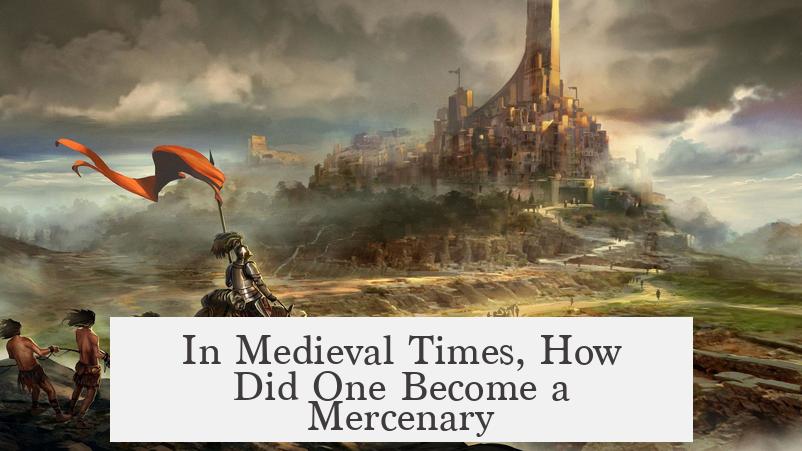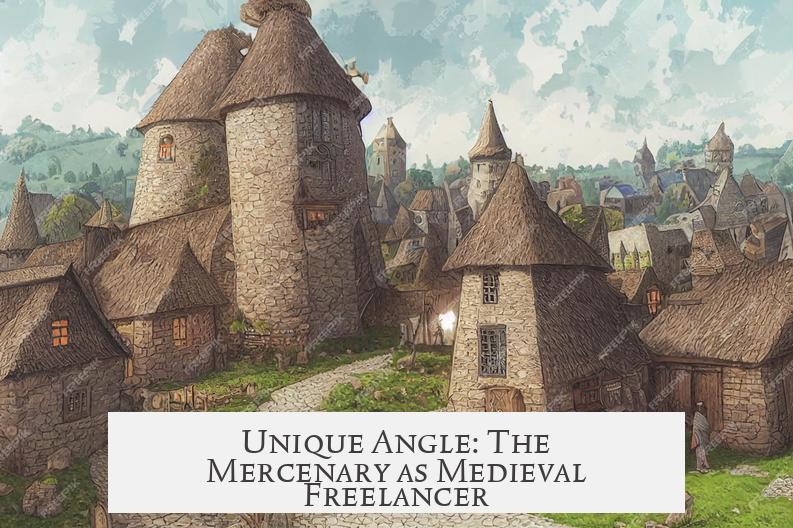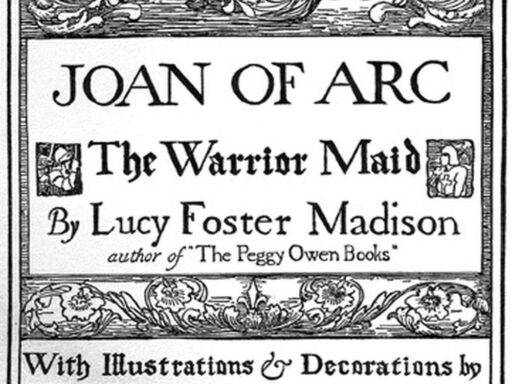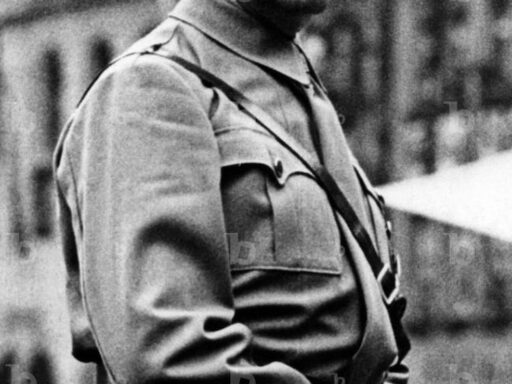In medieval times, becoming a mercenary typically involved joining a military force hired to fight for pay rather than loyalty to a king or country. The exact process varied by period and region but generally required men to be recruited by military leaders or companies after agreements were made between rulers or commanders. Mercenaries were often foreigners or men serving outside their native polity, motivated primarily by compensation rather than feudal obligation.
The idea of a mercenary in the medieval era has blurry boundaries. Defining a mercenary is tricky because many soldiers fought for multiple lords during their careers and accepted various forms of payment. Some received money, while others gained land, titles, or privileges such as annuities. In this era, the lines between a mercenary and a soldier were not sharply drawn, complicating modern distinctions.
Dedicated mercenary companies with formal structures arose mainly in the late Middle Ages, around the 14th century. Before this, rulers usually secured mercenaries through agreements with other rulers. For instance, a king might loan troops from a neighboring lord’s army in exchange for payments and formal contracts. Such arrangements often resembled feudal treaties but were fundamentally commercial in nature.
A documented example includes English kings paying foreign counts a yearly fee in return for troops when needed. During King John’s reign, groups of soldiers, often of modest social status, were sent abroad to support foreign rulers. These forces were sometimes disliked due to their reputation for ferocity and indiscipline. This example reflects that mercenaries were sometimes made up of lower-ranking men rather than the nobility.
The social standing of mercenaries also affected how they were recruited. Medieval society was highly stratified, and warfare was traditionally dominated by the aristocracy, especially heavily armored soldiers known as men-at-arms. Contracts for mercenary forces often specified such troops, implying that wealth and status played roles in recruitment. However, many mercenaries came from varied social backgrounds, including commoners skilled with weapons.
Recruiting mercenaries involved active efforts by company leaders after securing contracts with a client lord or king. Military entrepreneurs would form recruiting parties to attract soldiers by promising pay and adventure. Urban residents often made up the pool of recruits since many free men were expected to serve in city militias and to own arms and armor. The militia included different classes of fighters, from mounted soldiers to foot soldiers armed with pikes or crossbows.
Men not on active contract typically returned to regular life, sought new contracts, or tried to join another mercenary company. This revolving nature made mercenary work uncertain but an option for those needing income or opportunity.
| Aspect | Details |
|---|---|
| Definition | Foreign soldier fighting for pay or reward, not feudal loyalty. |
| Mercenary Companies | Formed mid-to-late 14th century; earlier mercenaries often seconded in formal lordly agreements. |
| Recruitment | Contract negotiated between rulers, companies recruit men from town militias and lower ranks. |
| Social Standing | Often lower to middle class; aristocrats dominated men-at-arms roles. |
| Payment | Cash, land, titles, annuities, or marriage alliances. |
| Military Skill | Civilians trained in militias provided a ready pool of armed men. |
Summarizing, mercenaries became such by joining military companies after contracts were set between rulers or commanders. Recruitment focused on men used to weaponry, often with militia experience. The service was shaped by social class, payment type, and the mercenaries’ foreign status relative to the employing political entity.
- Mercenaries usually joined through recruitment after formal contracts were established between rulers or nobles.
- Payment was key and could be financial or involve titles or land.
- Most were from social classes accustomed to arms, commonly city militiamen or men-at-arms.
- The late Middle Ages saw organized mercenary companies; earlier mercenaries came from troop loans between rulers.
- Soldiers’ motives blended pay with potential social advancement, blurring the line between mercenary and soldier.
In Medieval Times, How Did One Become a Mercenary?

In medieval times, becoming a mercenary meant stepping into a world where loyalty was for hire and pay came in many forms—not just coins, but land, titles, or even marriage alliances. The path wasn’t a straightforward job application but a mix of social background, opportunity, and sometimes a pinch of desperation. Let’s dive into the medieval mercenary maze and find out what it really took to join these soldiers of fortune.
The term “mercenary” in the Middle Ages comes with baggage. Historians argue endlessly about who exactly counts as a mercenary. The line between a “mercenary” and a regular soldier straight out of feudal muster rolls is fuzzy. Essentially, a mercenary was a foreign soldier serving for pay, but even that definition has subtle cracks because payment wasn’t always silver—it could be land or even a favorable marriage. Soldiers often fought for multiple lords over their careers, crossing ethnic and political lines. So were these men mercenaries or just fighters lending their swords to the highest bidder? The answer is “yes” on a sliding scale.
The Evolution: Soldiers for Hire or Lords’ Pawns?
Mercenary companies, as we think of them—organized, hierarchical groups dedicated solely to fighting for pay—are a creature of the late Middle Ages. Before the 14th century, if a ruler wanted mercenaries, he didn’t send a job ad or set up a recruiting office. Instead, he approached another ruler and *borrowed* troops, paying the other sovereign for their service. These arrangements were contractual, sometimes quite complex, and often cloaked in feudal language even though the relationship was professional and transactional.
For example, the English kings Edward I and Edward III maintained “agreements” with the Kings of Scots and the Counts of Flanders. They paid yearly annuities, essentially retainers, for access to troops when conflict flared. This wasn’t a casual favor; it involved formal contracts spelling out terms, payments, and the obligations of all parties involved. This kind of diplomacy-cum-business exemplifies the blend of feudal tradition and mercenary practicality.
Recruitment: How Did the Troops Get Signed Up?
Once a contract was inked, the mercenary captains, sometimes called military entrepreneurs, faced the challenge of recruiting fighters.
- Picture a recruiting party: an officer with a small entourage, musicians playing to draw a crowd, maybe outside a bustling tavern.
- He’d pitch the glory, the adventure, and the pay. Sometimes the promise of land or rank was dangled like shiny bait—as medieval job ads went.
- Men from classes who were trained or required to bear arms were primary targets—townsfolk who belonged to militias and owned weapons found this opportunity familiar and plausible.
- For others, especially those of lower social standing with fewer prospects, the mercenary life was a gamble: potentially lucrative but full of risk, including death or dishonor.
Take the example of King John’s force of 200 “English” soldiers (actually mostly Welsh). This group had just one knight among them, a few officers, some mounted archers, and the rest were foot soldiers of low social rank. They soon earned a brutal reputation in Norway: bloodthirsty and savage. This shows mercenary bands weren’t necessarily elite knights but could be unruly, tough men often on the social fringes, ready to offer their blades for coin and plunder.
Social Classes and Military Service: Who Made Up These Forces?

The Middle Ages was a strict social hierarchy, and military service reflected that. The noble class usually dominated combat roles, particularly those involving heavy armor and horseback—a symbol of prestige and wealth.
Mercenary companies often included men-at-arms—armored lancers—who were usually wealthier or aristocrats because of the high cost of training and equipment. However, many soldiers came from humble origins, especially the foot soldiers, crossbowmen, or pikemen. Aristocrats might lead or fund companies, but the rank-and-file could be commoners with few other options.
In cities, men often belonged to militias as a civic duty. These militias ranged in quality and social standing:
- Wealthier men could serve mounted in elite companies.
- Less wealthy men often served as foot soldiers with polearms or crossbows.
- They were expected to own and maintain their weapons and armor, under penalty if they failed to appear when called.
This meant a large pool of armed men existed, trained well enough for war, from which mercenary captains could recruit. Being skilled in weapons made joining a mercenary group feasible—even appealing—for many free citizens.
Payment and Its Many Faces: More Than Just Gold Coins
Money talks, but in medieval wars, money wasn’t always king. Mercenaries were compensated in a variety of ways:
- Cash: The most straightforward form, earned during or after campaigns.
- Land: Some mercenaries got parcels of captured or granted land, giving them a stake in the political system they served.
- Titles and Rank: Commanders might receive noble titles or official recognition.
- Annuities: Regular payments in exchange for ongoing service potential.
- Marriage Alliances: Some mercenaries or their leaders won marriage into noble families as rewards.
Such rewards bridged the gap between mercenaries and traditional soldiers sworn to lords, blurring the roles further.
Life as a Mercenary: Between Contracts and Uncertainty
No contract, no pay. When not under contract, mercenaries had to fend for themselves. Many returned home—if they could—or roamed in search of new employers.
The life was uncertain and often harsh. Training, hunger, sickness, and battle-thinned their ranks constantly. The lure of pay and adventure sometimes outweighed these dangers, attracting soldiers of varying skill and social standing.
Would you have risked everything to wield a sword for gold, land, or honor? That’s the question a medieval man might face before joining a mercenary band. The answer depended on many factors: birth status, local conflicts, personal ambition, and sheer survival instinct.
Unique Angle: The Mercenary as Medieval Freelancer

Think of mercenaries as the freelancers of their day—but with more armor and fewer client reviews. Unlike knights bound by feudal loyalty, mercenaries made a career out of adaptability and opportunism. Their allegiances flipped based on contracts. Some rose to found dynasties or become military entrepreneurs themselves.
For example, the rise of mercenary companies in the late Middle Ages paved the way for professional armies centuries later. Military entrepreneurs who recruited, managed, and fought brought early innovation to warfare’s business side.
Summary: Becoming a Mercenary Was Both Practical and Risky
To become a mercenary in medieval times, a man needed a few ingredients:
- Access to weapons and some basic training, often through local militias or family tradition.
- Connections to a military entrepreneur or company leader recruiting fighters.
- A willingness to take on danger, uncertainty, and flexible loyalties.
- Sometimes social standing mattered, especially for those seeking command roles.
- Contracts negotiated by noble patrons or mercenary captains created avenues for service and payment.
Far from romantic notions of knights for glory, medieval mercenaries were professionals navigating a complicated, violent world that valued their skills—sometimes more than their origins.
Next time you wonder about the “soldier of fortune” archetype, remember that medieval mercenaries were precursors—fighters on contract, living at the sharp edge of feudal and economic realities. Their story helps us see how warfare and loyalty evolved over centuries from a system based on birth and land to one that included cold, calculated commerce.
How did social class affect becoming a mercenary in medieval times?
The medieval military was dominated by the elite. Many mercenaries were men-at-arms who could afford armor and training. However, some came from humble origins. Social standing influenced the type of soldier one could become.
What role did contracts play in mercenary recruitment?
Contracts were common and formal between rulers. These agreements outlined pay and service terms. Mercenary companies were often seconded troops lent by one ruler to another under contract.
How were mercenaries recruited during the Middle Ages?
Recruiters would form small parties to entice men, often promising pay and adventure. They targeted men from classes expected to bear arms, such as city militia members who owned weapons and armor.
Were mercenaries always foreigners in medieval times?
Typically, mercenaries were foreigners fighting for pay. But definitions blurred. Soldiers often switched lords and sometimes received land or titles instead of cash.
Did mercenaries have stable careers like modern soldiers?
Not usually. Mercenaries were paid only under contract. Between contracts, many returned to civilian life or sought new employers. Survival and finding the next contract was uncertain.




